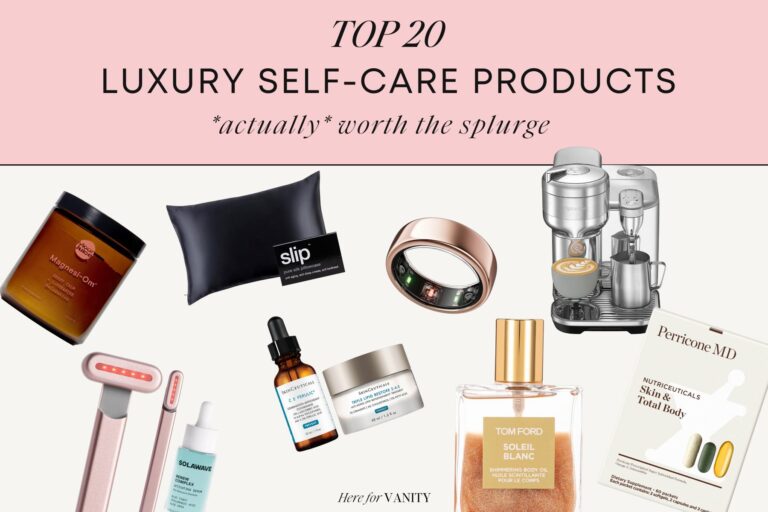9 Practical Ways to Naturally Lower Cortisol Levels
We know that too much stress is bad for us, but what can we do?
Try these practical tips to naturally lower cortisol, improve your mood, get great sleep, and (finally) lose that stubborn belly fat.

What is Cortisol, and How Does It Work?
Cortisol often gets a bad rap, but cortisol is not inherently bad, per se.
Cortisol is the body’s “stress hormone” and is vital in our physiological response to stress.
Cortisol, produced by the adrenal glands, helps regulate metabolism, blood sugar levels, inflammation, and the immune response.
The cortisol release is part of the body’s natural fight-or-flight response, helping us cope with stressful situations. For example, if a car cuts you off in traffic, your cortisol kicks in so you can respond quickly.
Modern-day stressors, however, don’t need that fight-or-flight response. Yet here we are, constantly thinking of the mile-long to-do list and dealing with the daily demands of life.
Exposure to these stressors for a long time can lead to chronically high cortisol levels. This can harm our health.
High cortisol levels cause health issues. These include anxiety, depression, insomnia, high blood pressure, weight gain, digestive problems, a weakened immune system, and even heart disease.
Signs of High Cortisol
If you’re feeling burned out and just not feeling like yourself, you might have high levels of cortisol. Here are the most common signs of higher-than-normal cortisol levels:
Unable to fall asleep at night (and waking up in the middle of the night)
Cortisol regulates the sleep-wake cycle, so too much cortisol messes up your sleep cycle.
If you’re feeling “tired but wired” at night or get a bout of energy right before bed, your cortisol hormone might be to blame.
It’s also not uncommon to wake up in the middle of the night between 2-4 am when you have higher cortisol levels.
As a result, you lack energy the next day, perpetuating the endless cycle as you reach for caffeine and sugar to get you through the day.
Your mood is off
You know those days when you’re irritated, and everything is bothering you? Too much cortisol can unbalance brain neurotransmitters. This can cause mood swings, irritability, and anxiety.
You’re STILL sore from your workouts
Doing all the right things in the gym but always feeling sore and worn down?
Cortisol is catabolic, meaning it can break down muscle tissue for energy. High cortisol levels can prolong post-workout recovery time, leaving you feeling fatigued and sore for longer than normal.
Low libido
It’s not just “you”. Cortisol can interfere with sex hormone production, leading to a decreased libido or low sex drive.
Digestive issues
Chronic stress and elevated cortisol levels can disrupt digestive function, leading to bloating or constipation.
You’re gaining weight
If you feel like you’re doing everything right with your diet and exercise but are still gaining body fat, high cortisol might be to blame.
Cortisol influences metabolism and fat storage, and chronically elevated levels have been linked to weight gain, particularly in the stomach area.
You can’t stay away from sugar
You crave carbs and sugar when the body is out of balance with high cortisol and low dopamine.
Managing Stress
How many of these signs did you tick off?
I noticed these symptoms in myself for far too long but chalked it up to work stress or #momlife.
I pushed through the day with obscene amounts of caffeine and then would wind down at the end of the day with a glass of wine, only worsening the symptoms.
I didn’t start researching what could be wrong with me until I became obsessive. I tried many techniques, and then I found what worked for me.
Once I did, my mood and digestion improved, and I finally started to feel normal again.
Natural Ways to Lower Cortisol That Actually Work
Here are the best practical strategies to naturally lower cortisol and promote overall well-being:
1. Switch to green tea in the afternoon vs. another cup of coffee
I cannot subscribe to eliminating coffee – not gonna happen.
However, I knew powering through the day with a coffee in the morning, an espresso mid-morning, and an iced coffee in the afternoon wasn’t doing me any favors.
A morning cup of coffee can boost energy. But, too much caffeine can lead to cortisol dysregulation.
Caffeine stimulates the release of cortisol, especially in sensitive individuals or those with pre-existing stress.
The good news is that you can still enjoy coffee in the morning. However, consider picking a less caffeinated substitute in the afternoon and see how you feel.
It will likely lead to better sleep, which will help regulate your cortisol.
This was hard in the beginning because I love coffee and find it ritualistic. Instead of cutting out caffeine, substituting another beverage at the same time each day helped the transition.
2. Create a nightly sleep routine
Quality sleep is crucial for cortisol regulation and well-being, but simply saying “get enough sleep” is hard.
What worked for me was scheduling a wind-down routine with very specific actions that helped me fall asleep when I was supposed to.
A good sleep hygiene routine will do wonders for your mind and body.
Here’s my bedtime routine for reference:
8 pm: Wind down dim lights, take a bath or hot shower, do a relaxing skincare routine, and get in cozy pajamas. Turn the thermostat to 67-68 degrees for a cooler sleep environment (helps provide a good night’s sleep).
8:30 pm: Take Magnesium and 5-HTP, and drink herbal nighttime tea while browsing online or reading (Yes, I still use screens at night. But if you can eliminate screens, I hear that’s better). Instead, I use blue-light-blocking glasses.
9:30 pm: Switch to the Kindle app to read a book or listen to a guided meditation. Take 3-5mg of Melatonin.
10:00 – 10:30 pm: Lights out/sleep.
This gives me 7-8 hours of sleep each night and, most importantly, establishes a consistent sleep schedule by allowing me to go to bed and wake up at the same time every day.
A relaxing bedtime routine signals to your body that it’s time to wind down, making it part of your daily habits.
Related: Wake Up Looking Pretty: Your Ultimate Self-Care Night Routine
3. Swap to low-intensity exercise and set a step count goal
This was hard for me to get used to, but oh-so beneficial.
I associated physical fitness with high-intensity exercise a couple of days a week alongside a heavy lifting routine 4-5 days a week.
I knew that regular exercise and muscle building were the fountains of youth over 40, but I wasn’t seeing the results I normally would when I was in my thirties.
My body felt tired, I had muscle weakness, and I got a little cranky before my workouts. I knew I had to scale back and try a different approach.
Regular physical activity is good for us, as well as a potent stress reliever and cortisol regulator. But too much is not good. Intense exercise several times a week may do the opposite and cause an increase in cortisol levels.
I saw a difference when I swapped to a lower intensity full body workout 2-3x a week and upped my daily step goal to 10-12k every single day. I wasn’t as sore, and my body felt happier.
Every now and then, I will incorporate a good, sweaty cardio session to get my heart rate up for the endorphins, but if I’m not feeling up to it, I don’t push my body.
The main takeaway is to find exercise you enjoy that doesn’t spike cortisol or wear out your body. This could be yoga, pilates, weight training with adequate recovery, or simply just walking.
If you swap to these lower-intensity routines and notice weight loss, it is likely due to decreased cortisol production.
4. Indulge in self-care
In today’s fast-paced world, self-care is often neglected but essential for managing stress and promoting well-being, especially for women over 40.
Carve out time each day for self-care activities that nourish your mind and body.
This could include practicing mindfulness or meditation, journaling, taking a relaxing bath, getting a massage, or pursuing hobbies and interests that make you happy.
I prioritize alone time, whether getting a massage or facial, running errands alone, shopping, or just enjoying a cup of coffee in the morning before anyone else gets up.
Do what works for you and make an effort to schedule this. Your cortisol and stress levels may naturally decline.
5. Create a to-do list and take action today
If you’re overwhelmed by your ever-growing to-do list, now is the time to take action.
While taking action on the pending items may seem difficult at first, once you complete them, I’ll give you internal peace.
Organizational chaos and excessive commitments can contribute to stress and cortisol dysregulation.
Decluttering can simplify your life. First, clear your physical space. Next, prioritize tasks and set boundaries. These steps will protect your time and energy.
Delegate tasks when you can. Say no to non-essential commitments. Focus on what truly matters to you.
This week, I focused on organizing my taxes and decluttering our guest room. These tasks have been on my list for six weeks, but I keep putting them off. Every time I looked at the list, it was a constant reminder that I still had to do the hard thing.
I took action by blocking two hours and getting it done. And you know what? I feel so much better.
Related: How to Show Up for Yourself
6. Make a meal plan with stress-relieving foods
Nutrition plays a significant role in stress management and supporting overall health. Incorporate nutrient-rich foods into your diet that can help reduce stress, improve hormone levels, and reduce inflammation, such as:
- Dark leafy greens: Spinach, kale, Swiss chard, and collard greens are rich in magnesium, which can help regulate cortisol levels and promote relaxation.
- Fatty fish: Salmon, for example, is a good source of omega-3 fatty acids (healthy fats), which have anti-inflammatory properties and may help reduce cortisol levels.
- Berries: Blueberries, strawberries, raspberries, and blackberries are packed with antioxidants to help combat oxidative stress and reduce inflammation.
- Nuts and seeds: Almonds, walnuts, flaxseeds, chia seeds, and hemp seeds are rich in magnesium, omega-3 fatty acids, and other nutrients that support stress resilience.
- Dark chocolate: Hooray! Dark chocolate includes magnesium and is my favorite part of a balanced diet. Studies show it may reduce cortisol levels, too!
Instead of removing foods, add more to a healthy diet. For example, have a protein berry smoothie in the morning or a handful of nuts in the afternoon.
Replacing processed foods, which can increase cortisol, with healthier whole-food options will help alleviate stress and make you look and feel good.
Related:
- The 12 Most Powerful Anti-Aging Superfoods for Women Over 40
- 5 Nutrient-Packed Smoothies for Glowing Skin and Hair
7. Skip the intermittent fasting
I know intermittent fasting is the hot thing these days, but it is not right for everyone.
Intermittent fasting is an eating pattern that involves cycling between periods of eating and fasting. The most common method is the 16/8 approach, in which one fasts for 16 hours and eats within an 8-hour window.
Many people like intermittent fasting because it has been shown to improve metabolic health by reducing insulin resistance and lowering blood sugar levels.
However, by not eating in the morning, intermittent fasting can cause additional stress on the body and raise cortisol levels.
When we skip breakfast, our blood sugar levels drop, causing our bodies to release stress hormones such as cortisol and adrenaline to help regulate blood sugar levels.
I’ve tried intermittent fasting a few times and noticed that I gained body fat each time, even though I tracked and consumed the same amount of calories.
This was likely due to the increase in cortisol. So, if you’re noticing that you’re gaining weight or not feeling right while fasting, consider skipping it and see if that helps.
8. Swap your cocktail for a mocktail
I love a good cocktail, but alcohol can raise stress and cortisol levels in the body.
While having a drink may initially provide a sense of temporary relief or relaxation, the effects of alcohol on the body can ultimately lead to heightened feelings of anxiety and stress.
Plus, we all know alcohol messes with our sleep. Even one drink can decrease the amount of restorative sleep, impacting you for days after.
Cutting out alcohol entirely isn’t always possible (or fun). But, having a mocktail once in a while is a good step. It can help to naturally lower your cortisol levels.
Related:
- Alcohol is Aging You – Here’s How to Reverse The Damage
- The Best Low-Sugar Mocktails With Guaranteed Anti-Aging Benefits
9. Consider taking supplements
Some supplements that may help lower cortisol levels include:
- Adaptogenic herbs help the body adapt to stress. They include ashwagandha, rhodiola, holy basil, and eleuthero. People have used them for centuries in traditional medicine to promote balance.
- Magnesium is essential. It plays a role in over 300 enzyme reactions, including cortisol regulation and relaxation. It helps the body’s stress response. I take magnesium glycinate at night to help with my sleep.
- Vitamin D: Adequate vitamin D levels are important for overall health and may help support mood and reduce cortisol levels. Vitamin D is especially important if you live in a cloudy climate.
A Balanced Approach
Keeping your cortisol levels in check isn’t about ditching all the good stuff. A few swaps and lifestyle modifications can be all you need to get your stress levels back to normal.
Adding these tactics to your routine can help you manage cortisol, beat stress, and feel great.
Remember to take care of yourself, eat healthy, and reach out to the pros if you need a hand on your path to feeling your best!
Pin this for later:







